Campaign groups and performance targets may be one of the least known (and therefore least used) AdWords features. Google released it in September 2016, and I haven’t heard or read much about it since. That’s also why I was the only one mentioning it in a list where experts shared the most underrated AdWords features.
But it’s actually a quite useful visualization to quickly see if a group of campaigns will reach certain targets, such as a CPA or a spend target. It will even tell you how likely it is you will meet your targets.
So if someone regularly asks you questions like “How many conversions do you expect from AdWords this month?” or “Are we going to stay within our target budget?” and you don’t have a third-party tool or script telling you this, this free solution within AdWords is definitely worth using.
You’ll also sound much more scientific by saying “We have an 86% chance of meeting our target” instead of “probably”.
Setting up AdWords performance targets
In the steps below, I’ll show you how to set this up and what the options entail.
The screenshots are based on the new AdWords interface. You’re probably not quite used to the new interface yet (and probably not a fan either), and neither am I. We all have to make the switch somewhere in 2018 anyway, so we might as well start to slowly and reluctantly let go of the old interface.
(Note: The author is based out of Amsterdam so the screenshots will display the Euro symbol.)
Step 1: Creating a campaign group
Any group of campaigns in your account that share a common theme or KPI can be grouped into a campaign group. But there are two limiting factors to consider when grouping campaigns:
- Each campaign can only belong to one campaign group at a time, not multiple campaign groups.
- You can’t add campaigns with shared budgets to a campaign group.
Chances are, you’re already using a shared budget for a group of campaigns that share a specific spend target, so it’s really too bad you can’t use those campaigns for campaign groups.
Hopefully, Google will make this possible in the future, but in the meantime, you’ll have to choose between:
- Using separate daily budgets for each campaign and monitor the total budget with a campaign group and a performance (spend) target.
- Using shared budgets without a monitoring functionality.
To get started, you can create a campaign group by clicking on the down arrow next to ‘All campaigns’ in the left navigation panel and then clicking on “All campaign groups”:
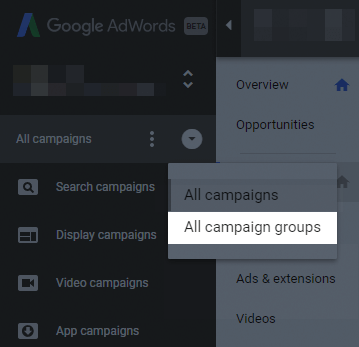
This will give you the following screen, where you’ll click the “Create Campaign Group” button:
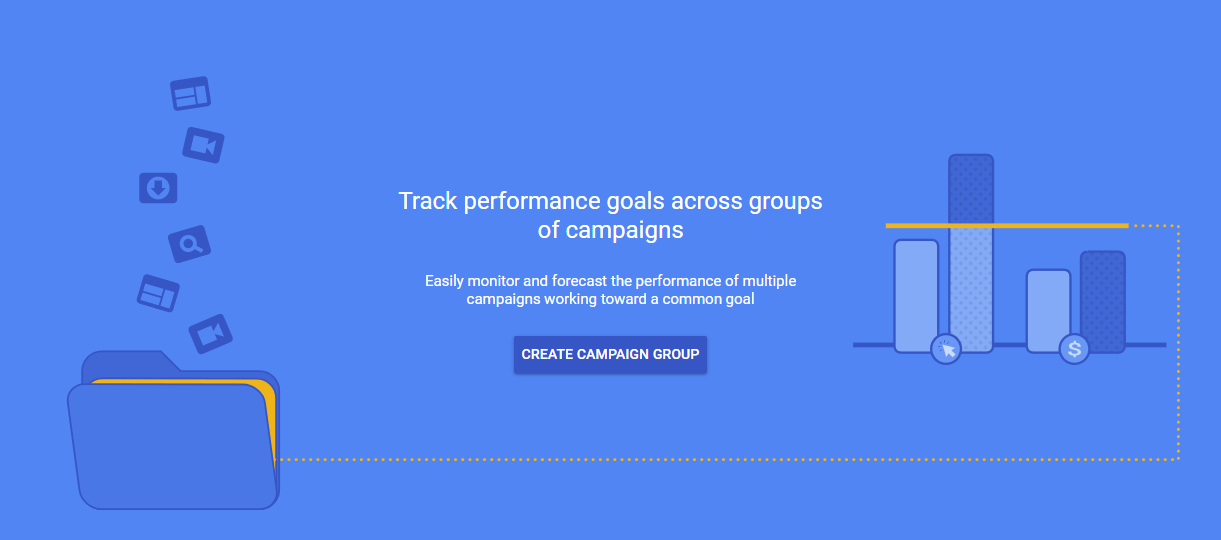
Now it’s just a matter of naming your campaign group and selecting the campaigns you want to be part of this group:
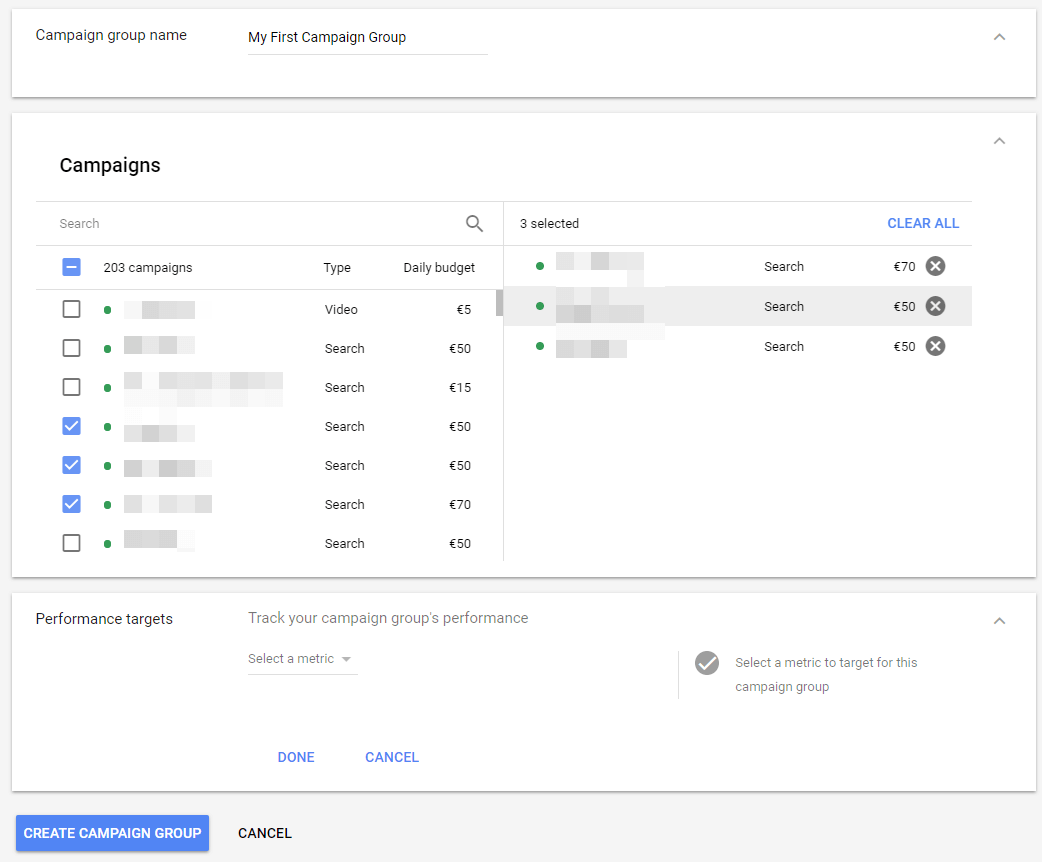
At the bottom, you’ll see the performance targets part, which brings us to step two.
Step 2: Setting a performance target
For each campaign group, you can set one or multiple targets, and you’ll need to assign a date range if you want to use volume targets (spend and number of conversions or clicks).
Performance targets are divided into two categories, and each contains the following targets:
Clicks:
- Avg. CPC target
- Number of clicks target
- Spend target
Conversions:
- Avg. CPA target
- Number of conversions target
- Spend target
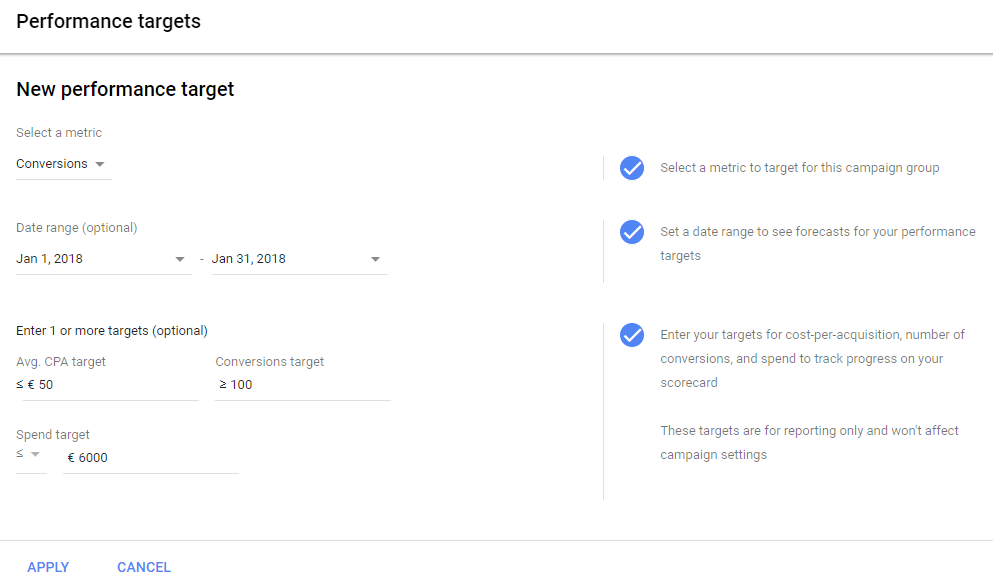
Unfortunately, there isn’t a ROAS (Conv. value / cost) and revenue (Conv. value) target option yet. So if you’re an ecommerce advertiser, you could still use the other target options and maybe convert your ROAS to a CPA by dividing your average order value by your ROAS target.
Furthermore, it’s important to know that:
- You can’t use the different target categories within the same date range. So for example, you can’t have a number of clicks and a number of conversions target for the same month.
- You can’t have a CPA target without a date range in combination with a spend target that has a date range. Google will also consider that as an overlapping date range as not entering a date range is actually the ‘all time’ date range.
- But you can have multiple targets within the same category and the same date range. So you can have an average CPA, number of conversions, and spend target within the same date range, as shown in the example above.
However, this does defy ‘The Paid Search Uncertainty Principle’ that states you can’t control both efficiency (CPA) and volume (spend / number of conversions) at the same time. So even though you can monitor them simultaneously, when optimizing your account, one goal must be leading your optimizations.
If you can get more conversions for your target CPA, but this means you will exceed your target budget, what will you do? The answer to this question will tell you which goal is leading: volume or efficiency.
My advice would be to create multiple, non-overlapping performance targets for each month of the year in advance, assuming you know your monthly targets in advance. But no need to worry if you don’t, as you can edit your performance targets at any time:
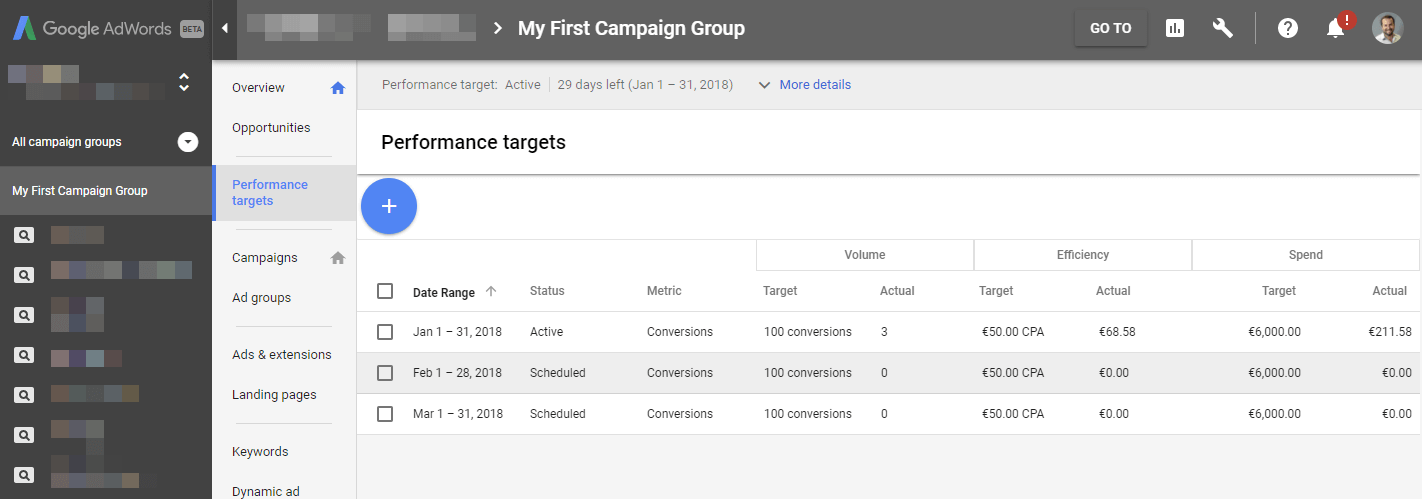
And if you use multiple targets (such as CPA and spend), just realize that one of them has to matter more than the other. As George Michie says in The Paid Search Uncertainty Principle: “The more you predetermine one, the less control you have over the other.”
Gathering insights about key performance targets
Now, what about those chances of meeting your target I mentioned at the beginning? This interesting data is hidden beneath the “More details” link at the top of the page within your campaign group view:
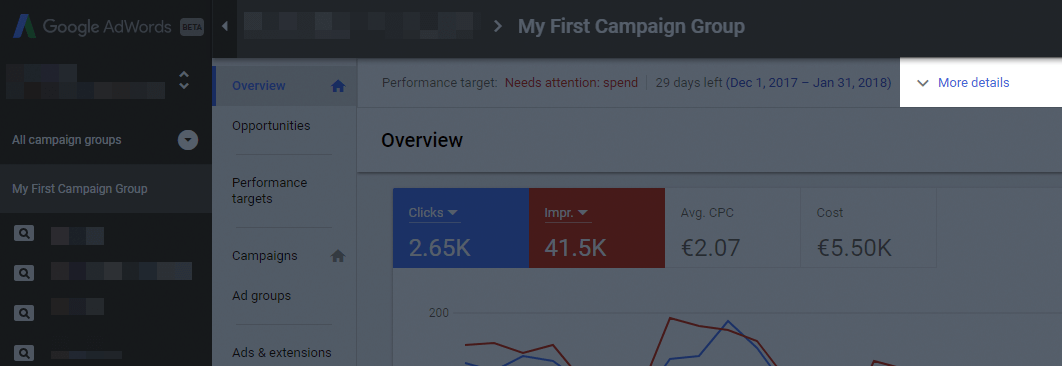
Clicking on it gives you forecasts in terms of ‘xx% chance of meeting target’, the so-called ‘summary cards’:

And hovering over the graphs shows you estimates for each target:
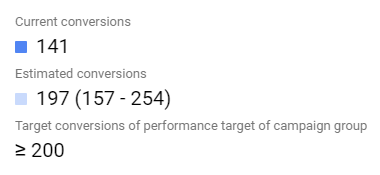
Take advantage of AdWords performance targets
Although it has a few drawbacks (incompatibility with shared budgets, ROAS, and revenue being the main ones), I’d highly recommend setting up campaign groups and performance targets for your AdWords campaigns. Consider it as one of your PPC New Year’s resolutions for 2018. It’s only a couple of minutes of work for each account and delivers very useful insights you can’t easily get anywhere else.
Don’t forget to connect all your Google ads with post-click landing pages. Find out more about creating personalized post-click landing pages by signing-up for an Instapage Enterprise demo today.
About the author
Wijnand Meijer is the co-founder and CEO of TrueClicks, a PPC auditing, monitoring and recommendation platform. As an agency veteran with eight years of experience at iProspect, Wijnand has managed everything from local SMB accounts to international accounts spending millions on PPC. He regularly gives talks at conferences like SMX, Hero Conf, and ADworld Experience and has been voted in The Top 25 Most Influential PPC Experts in 2015, 2016, and 2017.

See the Instapage Enterprise Plan in Action.
Demo includes AdMap™, Personalization, AMP,
Global Blocks, heatmaps & more.
